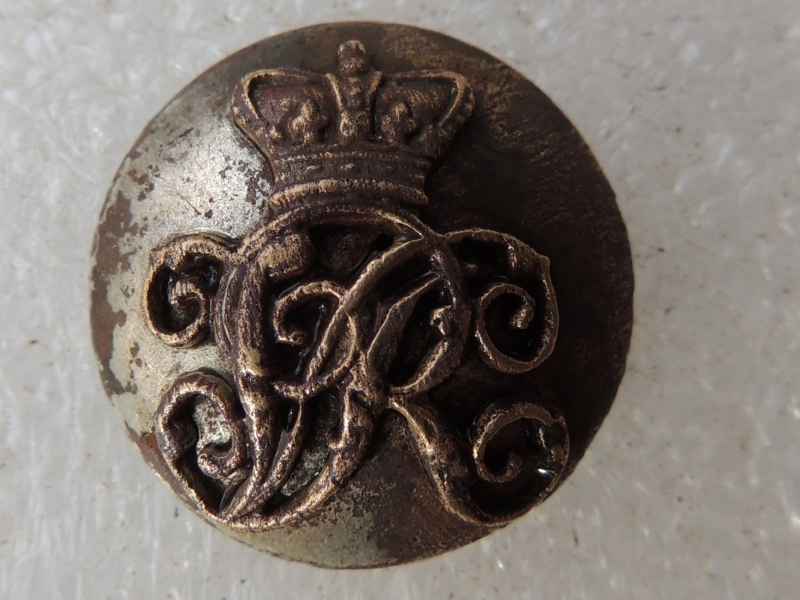
Lachlan Round was metal detecting in Australia in an area which his 1940s map marked as “ruins from a shepherd’s hut”, approximately one hour northwest of where Stan Purcell found his button, when he found this lovely button.
by

Lachlan Round was metal detecting in Australia in an area which his 1940s map marked as “ruins from a shepherd’s hut”, approximately one hour northwest of where Stan Purcell found his button, when he found this lovely button.
by


Marty Wiemert, a member of Metal Detecting Maine, recently found a Hammond Turner button at an old site. Marty very kindly donated the button to my collection.
Marty found this button in his home state in the USA and contacted me about it. First he sent me photos, then he sent the button which makes a wonderful contribution to my collection. I cannot explain the back mark at the moment.
The button is a one-piece with a soldered shank and was made between 1820 and 1850 (roughly) as that was the period during which the company was known as Hammond Turner and Sons. The early style lettering is a further clue to the date.
Thanks Marty!
by

Mark Leadley contacted me after finding this button in a field just outside Peel on the Isle of Man. He has found a number of interesting buttons featuring the treskele (or triskelion), the three-legged symbol of the Isle of Man.
by

The first button in the new Sporting gallery 4 is amazingly well-travelled. It was generously donated to my collection by Stan Purcell of Gordon, Victoria, Australia, seen here with his metal detector.
by

Christopher Simmins of Newstead in Victoria, Australia, contacted me about a lovely button he found recently.
In his email, Christopher wrote that, in 2014, ‘a friend found this interesting old button in a rubbish pit at the rear of her circa 1852 pub located at Dunolly, Victoria, Australia.’
On the web he had found ‘quite a few VR monogram pressed buttons … with poor historic info. The sellers seem to misunderstand and passionately misinterpret the VR monogram as Victorian Railways, which is a wild and incorrect assumption.’
After carrying out a closer investigation and what he called ‘a cursory forensic comparison’ between the VR button on this website and his example. Christopher suggested that, although they are very similar at first glance, they contain quite distinct differences.
He wrote that ‘the subtle detail features between the two buttons are quite noticeable, in particular the change from three to six jewels and the Fleur de lis stamping on the crown. Allowing for wear and tear on the original VR monogram die stamped by HT&S, I would boldly suggest that the die that used to create the monogram on the Australian find VR button was the original and had worn over time, losing its original detail features due to the thousands of stampings. I reckon the die that stamped your button was re-sunk at a later time, mainly due to wear. Your fine VR button example seems to appears to have undergone some extra fine detail adjustments by the die engraver, and no doubt was with the approval from the Royal College Of Arms.’
The button-making company Hammond Turner no longer exists – we do not make buttons!
